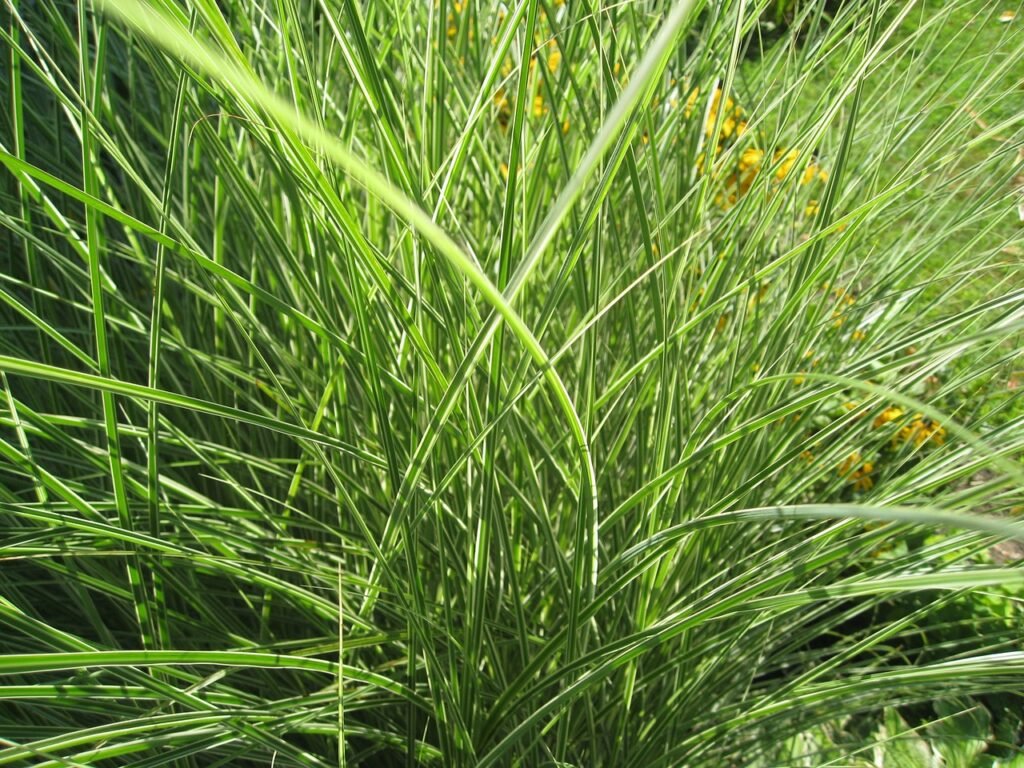So, you’ve got a garden filled with stubborn, unyielding weeds that seem to be growing at an exponential rate. You’re wondering if an electric mower is up to the task of taming these unruly plants. Well, the good news is that an electric mower can indeed handle thick weeds, but there are a few important factors to consider before you put it to the test. In this article, we’ll explore the capabilities of electric mowers when it comes to tackling those overgrown weeds and provide you with some valuable tips to ensure a successful cutting session.
Choosing the Right Electric Mower
Power and Cutting Capacity
When choosing an electric mower for cutting thick weeds, it’s important to consider its power and cutting capacity. Look for mowers with higher wattage or voltage ratings, as they tend to have more power and can handle tougher vegetation. Additionally, check the cutting width or deck size of the mower. A wider cutting width allows you to cover more ground with each pass, making it easier to tackle thick weeds efficiently.
Blade Type and Design
The blade type and design of an electric mower can greatly impact its effectiveness in cutting through thick weeds. Look for mowers with sharp, durable blades that are specifically designed for tackling tough vegetation. Consider blades with a mulching or high-lift design, as these can help to disperse the cut weeds more effectively, preventing clogging and tangling.
Adjustable Cutting Height
Having an adjustable cutting height feature is essential when dealing with thick weeds. Different weeds may have varying heights, and being able to adjust the cutting height on your mower allows you to customize the cut to effectively tackle the thick vegetation. Look for electric mowers that offer multiple cutting height options to ensure versatility in handling various weed densities.
Additional Features
Some electric mowers come with additional features that can enhance their performance when cutting through thick weeds. Look for mowers with features like a built-in mulching kit or a bagging attachment. The mulching kit will finely chop the weeds and return them to the lawn as a natural fertilizer, while the bagging attachment allows you to collect the cut weeds for easy disposal. These additional features can make the weed-cutting process more efficient and convenient.
Understanding Thick Weeds
Types of Thick Weeds
Before diving into how electric mowers can handle thick weeds, it’s important to understand the different types of weeds you may encounter. Thick weeds can include aggressive plant species like crabgrass, dandelions, thistles, or even ivy. Each weed type presents unique challenges due to its growth pattern, density, and toughness.
Risks and Challenges
Thick weeds pose several risks and challenges when it comes to cutting them. Their dense foliage and strong root systems make them resilient and difficult to overcome. They can quickly clog mower decks, leading to reduced cutting efficiency. Additionally, some thick weeds may have thorns or prickly leaves, increasing the risk of injury. It’s important to exercise caution and take appropriate measures to handle these challenges effectively.
Suitability of Electric Mowers for Thick Weeds
Pros of Using an Electric Mower
Electric mowers offer several advantages when it comes to tackling thick weeds. Firstly, they are environmentally friendly as they produce zero emissions compared to their gas-powered counterparts. Electric mowers also tend to be quieter, reducing noise pollution in your neighborhood. Furthermore, electric mowers require less maintenance, as they don’t require oil changes or fuel mixing. They also start instantly with the push of a button, eliminating the need for manual pulling of a starter cord.
Cons of Using an Electric Mower
While electric mowers offer many benefits, there are some drawbacks to consider when using them to cut through thick weeds. Electric mowers may have a lower power output compared to gas-powered mowers, which can affect their ability to handle dense vegetation. Additionally, electric mowers are limited by their cord length or battery run time, which may require frequent pauses for recharging or cord repositioning. These limitations may affect the efficiency and convenience of using an electric mower for thick weed cutting.
Preparing Your Electric Mower
Sharpening the Blades
To ensure optimal performance when cutting through thick weeds, it’s crucial to keep the mower blades sharp. Dull blades can tear the weeds instead of cutting them cleanly, leading to an uneven and less effective cut. Regularly sharpen the blades following the manufacturer’s instructions or seek professional assistance if needed. A sharp blade will make your electric mower more efficient and effective in tackling thick weeds.
Ensuring Proper Intake and Discharge
Clearing any debris or clippings from the intake and discharge area of your electric mower is essential before tackling thick weeds. Thick weeds have a tendency to clog the mower deck, reducing the cutting capacity and potentially damaging the motor. Take the time to inspect and clean the intake and discharge areas to ensure a smooth flow of vegetation, minimizing the risk of clogging.
Cleaning the Mower Deck
After each use, it’s important to clean the mower deck thoroughly. Thick weeds can leave behind residue and debris that may accumulate and hinder the mower’s performance over time. Use a brush or hose to remove any grass clippings, dirt, or other debris from the underside of the mower deck. Regular cleaning will help maintain the longevity and efficiency of your electric mower.

Techniques for Cutting Thick Weeds
Slow and Steady Approach
When cutting thick weeds with an electric mower, it’s advisable to take a slow and steady approach. Rushing through the process can result in clogging or tangling of the vegetation, reducing cutting performance. Take your time and allow the mower to effectively cut through the thick weeds, ensuring a thorough and even finish.
Avoiding Clogging and Tangling
To minimize the risk of clogging or tangling, avoid cutting thick weeds when they are wet or damp. Moisture can cause the weeds to clump together, leading to clogging in the mower deck. Additionally, consider raising the cutting height slightly when dealing with denser vegetation. This allows the mower to pass through the weeds without getting overwhelmed or entangled.
Cutting Height and Blade Speed
Adjusting the cutting height and blade speed is crucial when cutting thick weeds. Start with a higher cutting height and gradually reduce it as you make progress. This gradual approach prevents the mower from becoming overwhelmed and allows it to cut through the thick vegetation more effectively. Additionally, using a higher blade speed can provide more cutting power, but be mindful not to exceed the mower’s capabilities.
Safety Precautions
Wearing Protective Equipment
Before operating an electric mower to cut thick weeds, it’s essential to prioritize safety by wearing appropriate protective equipment. This includes safety glasses or goggles to protect your eyes from debris, sturdy footwear to prevent injuries from sharp objects, and long pants to protect your legs from potential scratches or contact with toxic plants. Additionally, ear protection is recommended to minimize noise exposure.
Clearing the Area
Before mowing, clear the area of any rocks, tree branches, or other obstacles that could pose a risk during the mowing process. Thick weeds may hide these objects, and hitting them with the mower blades can cause damage to the machine or result in injury. Take the time to walk through the mowing area and remove any potential hazards to ensure a safe and smooth cutting experience.
Avoiding Rocks and Obstacles
While clearing the area of obstacles is important, it’s equally crucial to be mindful of rocks and other hard objects as you mow through thick weeds. Rocks can damage the mower blades or motor if struck forcefully. Exercise caution and adjust the cutting height if necessary to minimize the risk of hitting rocks or other hard objects hidden within the thick vegetation.

Maintenance and Care
Cleaning After Use
Cleaning your electric mower after each use is vital for its longevity and performance. Remove any accumulated grass clippings, debris, or vegetation from the underside of the mower deck, as these can hinder its functionality over time. Use a brush or hose to thoroughly clean the mower, ensuring that all parts are free from residue or dirt.
Regular Blade Sharpening
Maintaining sharp blades is crucial for effective weed cutting. Regularly inspect the mower blades and sharpen them as needed. Dull blades can strain the motor and produce an uneven cut. Following the manufacturer’s instructions, sharpen the blades or consult a professional to ensure the best results.
Lubrication and Inspection
Periodically lubricate the moving parts of your electric mower and inspect for any loose or damaged components. Lubrication ensures smooth operation and minimizes friction, prolonging the life of your mower. Additionally, inspecting for loose or damaged parts allows you to address any issues promptly, ensuring safe and efficient operation.
Battery Maintenance
For electric mowers powered by batteries, proper battery maintenance is essential. Follow the manufacturer’s recommendations for charging and storing the battery. Avoid exposing the battery to extreme temperatures and ensure it is fully charged before each use. Regularly inspect the battery for any signs of wear or damage and replace it if necessary.
Alternatives to Electric Mowers
Gas-Powered Mowers
Gas-powered mowers are an alternative to electric mowers for tackling thick weeds. They offer more power and cutting capacity compared to electric mowers, making them suitable for dense vegetation. However, gas-powered mowers require regular maintenance, including oil changes and fuel mixing, and produce emissions and noise pollution.
Riding Mowers
Riding mowers, also known as lawn tractors, are another alternative for cutting thick weeds. They are ideal for larger areas or when dealing with extremely dense vegetation. Riding mowers offer increased power and cutting width, reducing the time and effort required for weed cutting. However, they are more expensive and require more storage space.
String Trimmers or Brush Cutters
String trimmers or brush cutters are handheld tools specifically designed to cut through thick weeds and brush. They offer maneuverability and can reach areas that mowers may struggle to access. String trimmers or brush cutters are suitable for smaller weed-cutting tasks or for touch-up work in harder-to-reach areas. However, they require more physical exertion and can be less efficient for larger areas.

Conclusion
In conclusion, electric mowers can be suitable for cutting through thick weeds, provided they have the necessary power, cutting capacity, and blade design. They offer several advantages, including environmental friendliness, lower maintenance requirements, and ease of use. However, it’s important to consider the limitations of electric mowers, such as their potential lower power output and battery or cord limitations. By following proper preparation, adjusting cutting techniques, and adhering to safety precautions, you can effectively use an electric mower to tackle thick weeds. Ultimately, the choice of mower type depends on the size of the area, the density of the weeds, and personal preferences.






